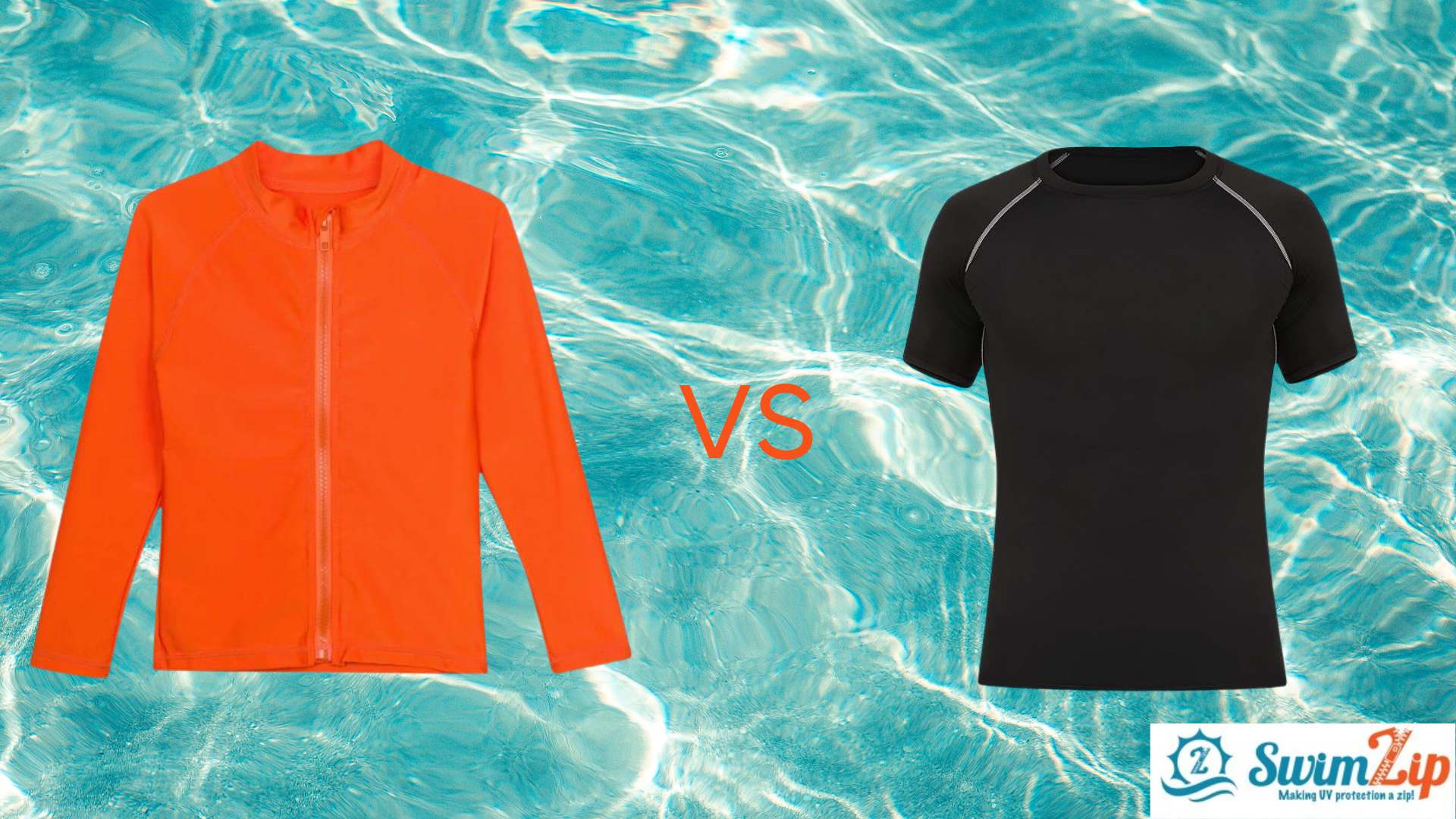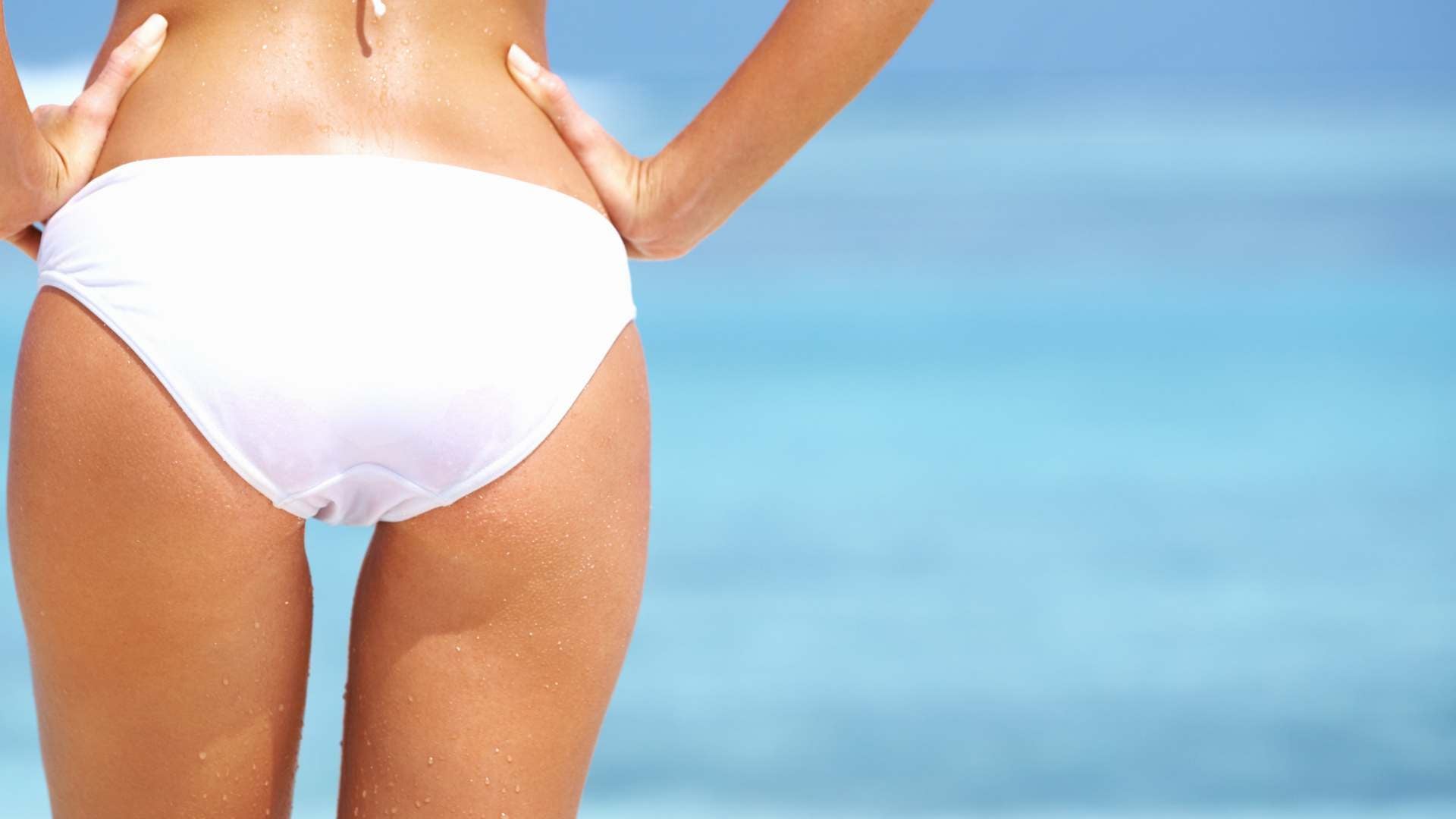
Rash guards vs swim shirts: How are they different?
Rash guards and swim shirts protect you from the sun during water activities, but each serves a different purpose.
The main difference between swim shirts and rash guards is the fit of the garment. Rash guards fit snugly and prevent chafing while surfing or other active beach activities. Swim shirts fit more loosely and provide sun protection at the beach or pool.
Quick links:
What are the differences between rash guards and swim shirts?
When to wear rash guards vs swim shirts
We'll dive into the similarities and differences between swim shirts and rash guards so you can pick a style that's right for you.
About rash guards
Rash guards originated in Australia during the 1970s to protect surfers from skin irritation and sun damage. Rash guards are form-fitting athletic shirts that offer an extra layer of protection against abrasions caused by surfboard wax and sand, giving wearers peace of mind during water activities. The name "rash guard" stems from the shirts’ ability to prevent painful rashes often associated with water sports.
Rash guards typically feature durable material with a high ultraviolet protection factor (UPF) for blocking harmful UV rays. A snug fit minimizes drag in the water, and many rash guards incorporate flat-lock seams to reduce chafing and increase comfort during extended wear.
While initially created for surfing, rash guards now see use in different sports activities both in and out of water. Their versatility extends beyond the water—many people wear them for land-based physical activities such as mountain biking and Brazilian Jiu-Jitsu.
About swim shirts
Swim shirts (or surf shirts) are a more relaxed alternative to rash guards, prioritizing comfort and sun protection for casual beachgoers and pool enthusiasts. They fit loosely and are made of thinner UPF-rated material.
The looser cut increases air circulation, keeping wearers cool during hot days at the water. A relaxed fit also appeals to those who feel self-conscious in more form-fitting swimwear.
Swim shirts often feature moisture-wicking properties for quick drying, transitioning smoothly from water to land activities. Their casual appearance fits well with regular shorts or pants, expanding their use beyond just swimming or beachwear.
Differences between rash guards and swim shirts
Rash guards and swim shirts provide different fits, coverage, performance, and looks. To pick the right top, weigh your personal preferences against what you plan to do in the water.
|
Rash guards |
Swim shirts |
|
|
Fit |
Snug, form-fitting |
Looser, more relaxed fit |
|
Material |
Stretchy, quick-drying, form-fitting fabrics (often nylon or spandex blends) |
Breathable, lightweight fabrics (often polyester) |
|
Purpose |
Active water sports, sun protection, abrasion protection |
Casual outdoor activities, sun protection, casual lifestyle clothing |
|
Design features |
Short or long sleeves, high crew neck, flatlock stitching for comfort |
Short or long sleeves, regular shirt neckline |
Both swimwear types offer maximum protection against ultraviolet radiation, reducing the risk of sunburn, sun poisoning, and skin cancer during outdoor activities.
When to wear rash guards vs swim shirts
The choice between sun-protective swimwear can make or break your day at the beach or pool. Rash guards and swim shirts each shine in different scenarios and offer unique benefits for different water activities.
Rash guards are perfect for:
- Cold water swimming
- Active water sports
- Situations requiring maximum flexibility
- Activities with a risk of skin abrasion
- Environments with prolonged UV radiation exposure
Opt for swim shirts for:
- Casual beach lounging
- Water park visits
- Pool parties and social water gatherings
- Outdoor activities beyond the water
- Times when a looser fit is preferable
Both options provide UV protection and shield you from harmful sun exposure. Your choice depends on your needs, the level of protection required, and the type of activity you plan to do.
Choose SwimZip’s high-quality swimwear
The SwimZip collection features long and short-sleeve rash guards for women, men, and kids that boost confidence in the sun. Our sun-protective swimwear blocks 98% of harmful UVA and UVB rays. Made from quick-drying, chlorine-resistant fabric, they provide superior comfort and coverage.
Check out some of our favorite collections to keep your entire family sun-safe:
- Swimwear accessories
- Sun hats
- Women’s swim tops
- Kid’s swim shorts
- Kid’s sunsuits
- Women’s swim bottoms
- One piece swimsuits
Rash guards vs swim shirts FAQ
Can you use a compression shirt as a rash guard?
Compression shirts work as alternatives to rash guards. Both offer snug fits and protect against chafing. Our rash guards have UPF-rated fabrics for sun protection, while compression shirts may lack this feature. For water activities, choose a compression shirt with quick-drying, chlorine-resistant material.
Is it okay to wear a rash guard at the swimming pool?
Rash guards are perfectly acceptable at swimming pools. They offer sun protection and modesty for swimmers who want extra coverage. Rash guards made from chlorine-resistant fabrics will last longer in pool environments. Many pools welcome rash guards as part of appropriate swimwear attire.
Do swim shirts keep you warmer?
Swim shirts add a layer of insulation, which can increase warmth in the water. The extra fabric creates a barrier between your skin and the cooler water. The level of warmth depends on the material thickness and water temperature. In very cold water, a wet suit will provide more significant heat retention.
Should rash guards be tight or loose?
Rash guards should fit snugly but not restrictively. A tight fit reduces drag in the water and prevents chafing from excess fabric movement. The rash guard shouldn't limit your range of motion or cause discomfort. Look for a fit that feels like a second skin while still allowing full flexibility.
Can rash vests be used for swimming?
Rash vests, another term for rash guards, work well for swimming. They offer sun protection, reduce drag in the water, and prevent chafing. Swimmers often wear them for both pool and open water activities (such as paddle boarding, kayaking, and more). Choose a rash vest made from quick-drying, chlorine-resistant material for the best swimming performance.
Further reading
How can I swim on my period without a tampon?




Leave a comment
This site is protected by hCaptcha and the hCaptcha Privacy Policy and Terms of Service apply.